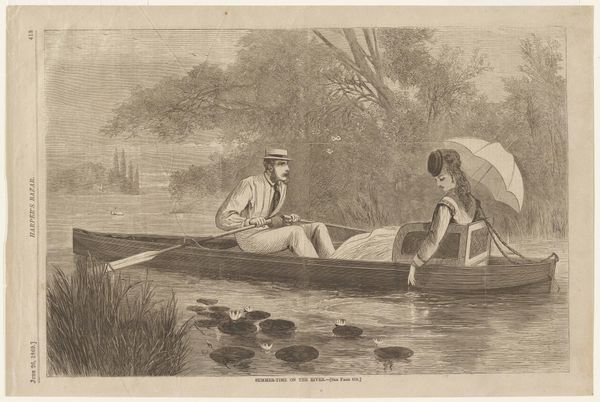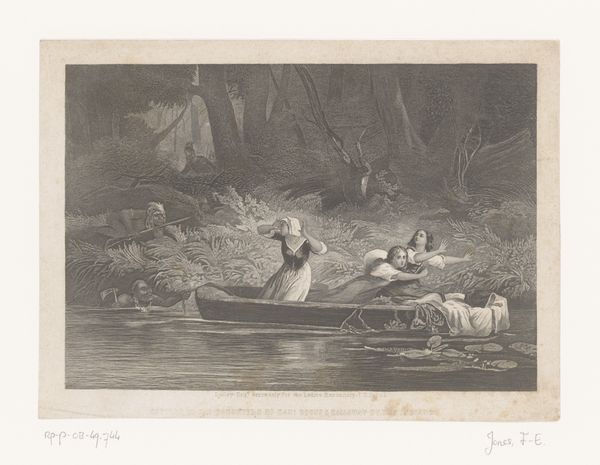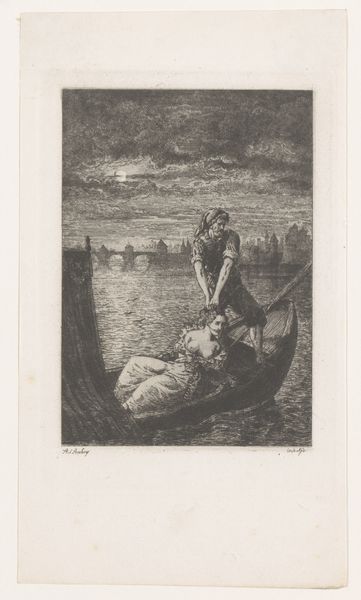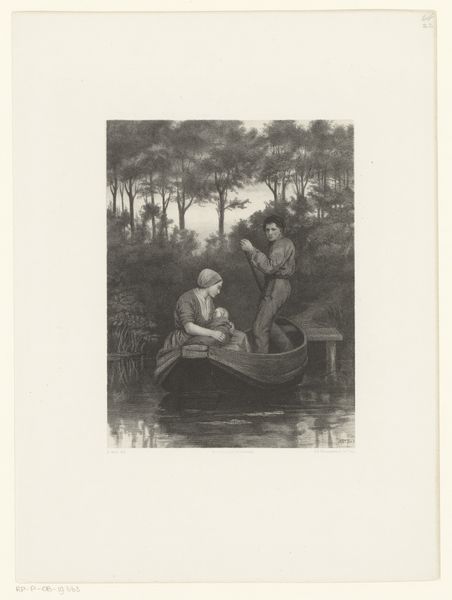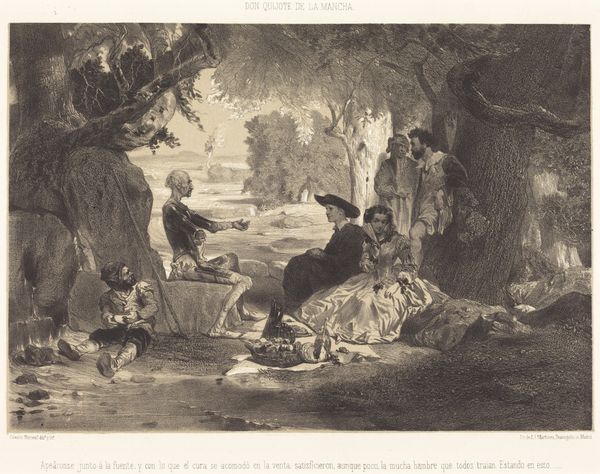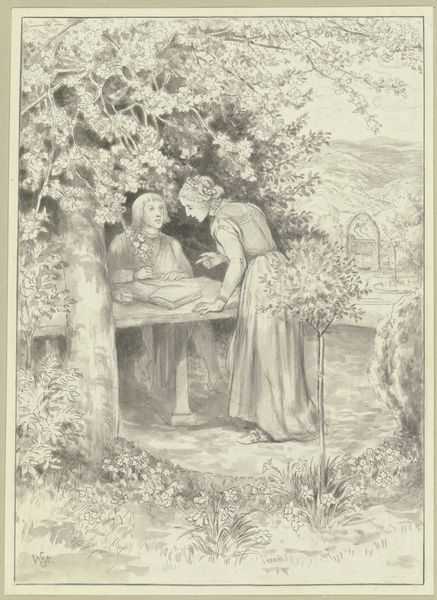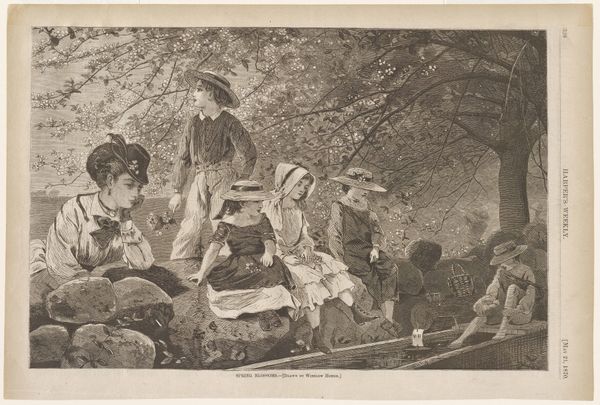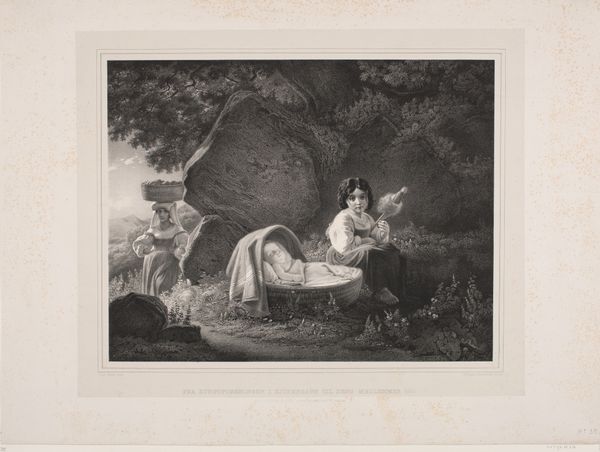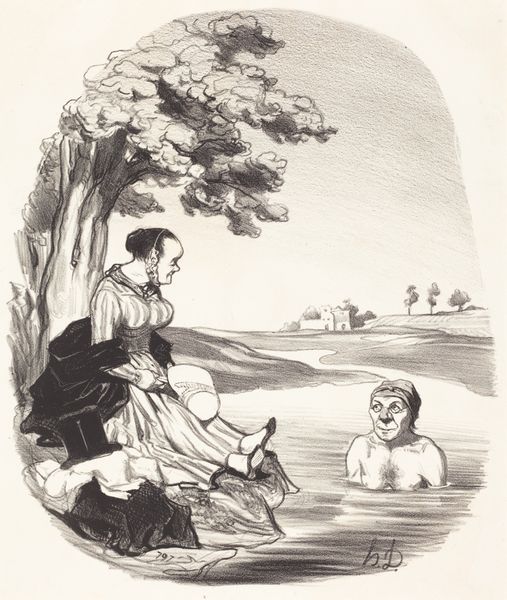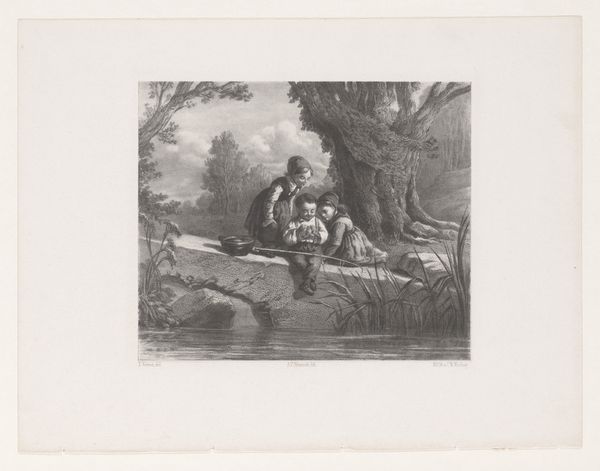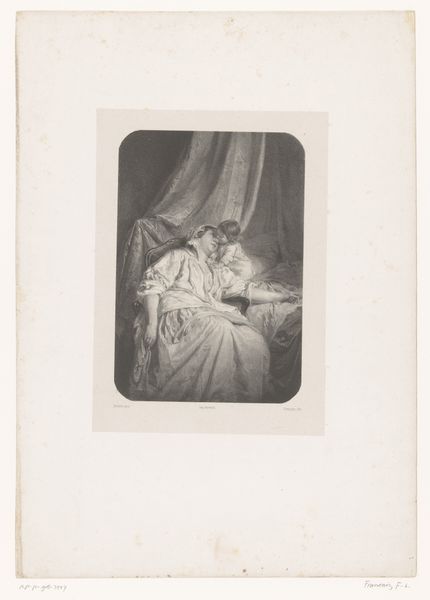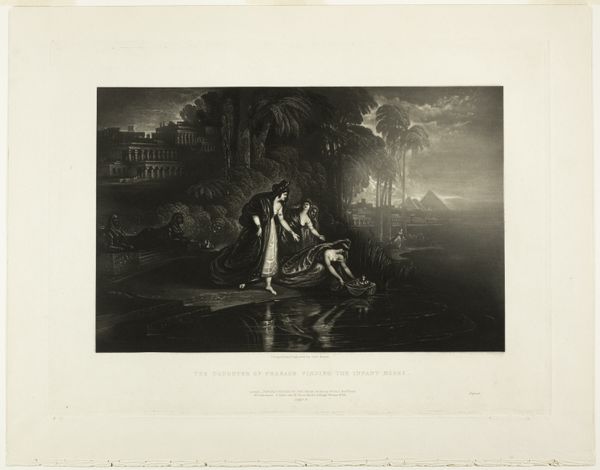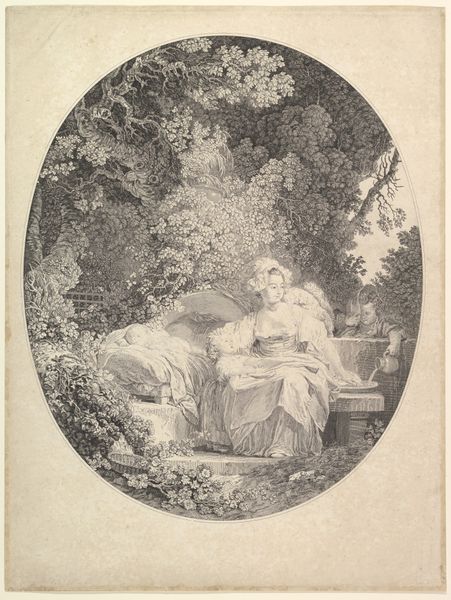
De kunstenaar Jean Baptiste Isabey met zijn familie in een roeiboot ('La Barque d'Isabey') 1803
0:00
0:00
#
narrative-art
# print
#
landscape
#
historical photography
#
group-portraits
#
romanticism
#
genre-painting
Copyright: Rijks Museum: Open Domain
Editor: This print, titled "The artist Jean Baptiste Isabey with his family in a rowboat ('La Barque d'Isabey')", was created in 1803 by François Aubertin. The grouping of the family feels so staged, almost theatrical. How do you see it? Curator: The print’s romantic depiction offers insights into the social conditions and artistic production of the time. Aubertin's aquatint method democratizes art by reproducing it. Consider the materiality of the print itself: paper, ink, the press, each a product of labor and industry. How does this mass production affect its artistic value, do you think? Editor: That’s interesting…It challenges the traditional notion of the singular, valuable artwork, doesn’t it? But wouldn't Isabey's family life also be a social commodity of sorts, put on display to the masses through the proliferation of this print? Curator: Precisely! Isabey's labor is in the original image; Aubertin’s in its replication and distribution. Note how landscape also shifts from simply background to actively framing and perhaps influencing their activities, becoming a stage upon which their social roles are enacted. How might the water function, not just as a material reality, but also a metaphorical space for their lives? Editor: The water could represent fluidity and change… a constantly shifting landscape mirroring their lives as a family navigating society. It also emphasizes their connection to, and reliance on, their environment, almost a type of collaboration with nature itself in the work’s production. Curator: Exactly! Examining its materials, techniques and distribution opens up exciting questions about its value beyond simple aesthetics or biography. What starts as an innocent family portrait transforms into something quite complex once you explore the labour, materials and industry used. Editor: I never thought I could look at a print and see such connections to material processes and labour! Thanks.
Comments
No comments
Be the first to comment and join the conversation on the ultimate creative platform.

